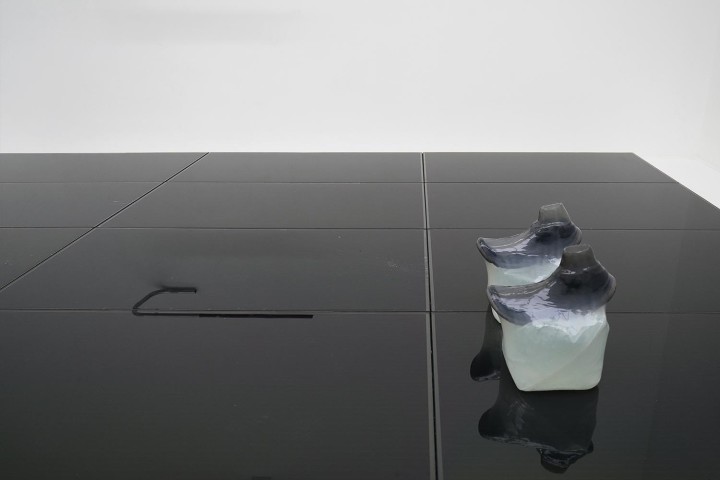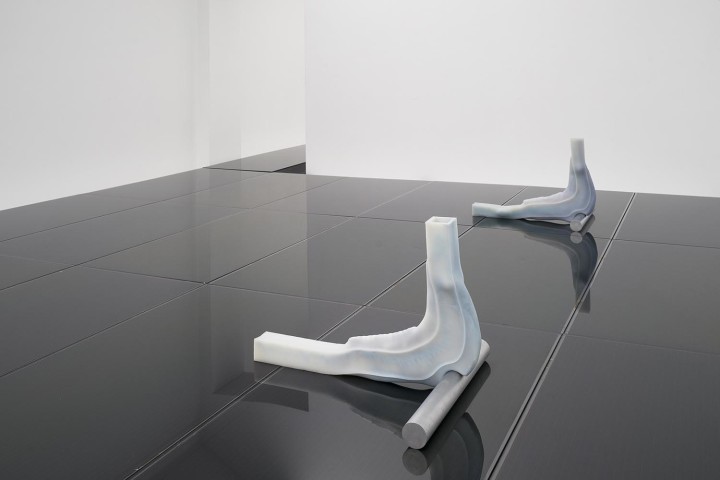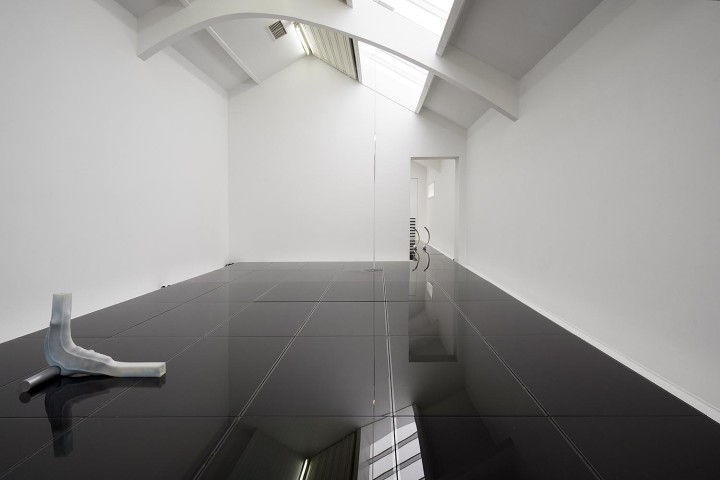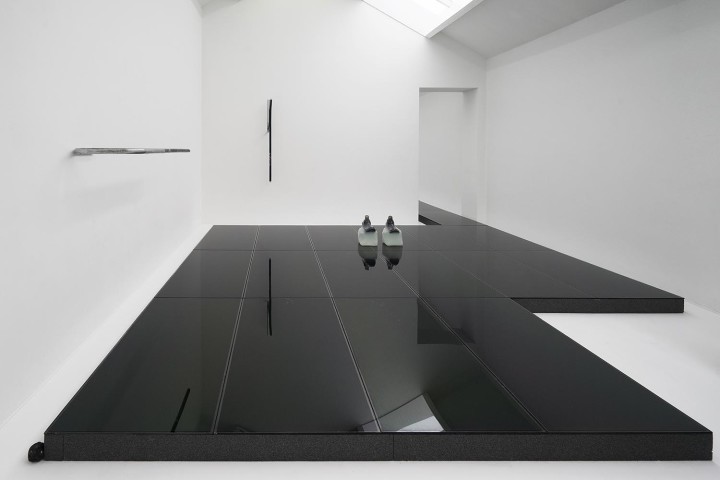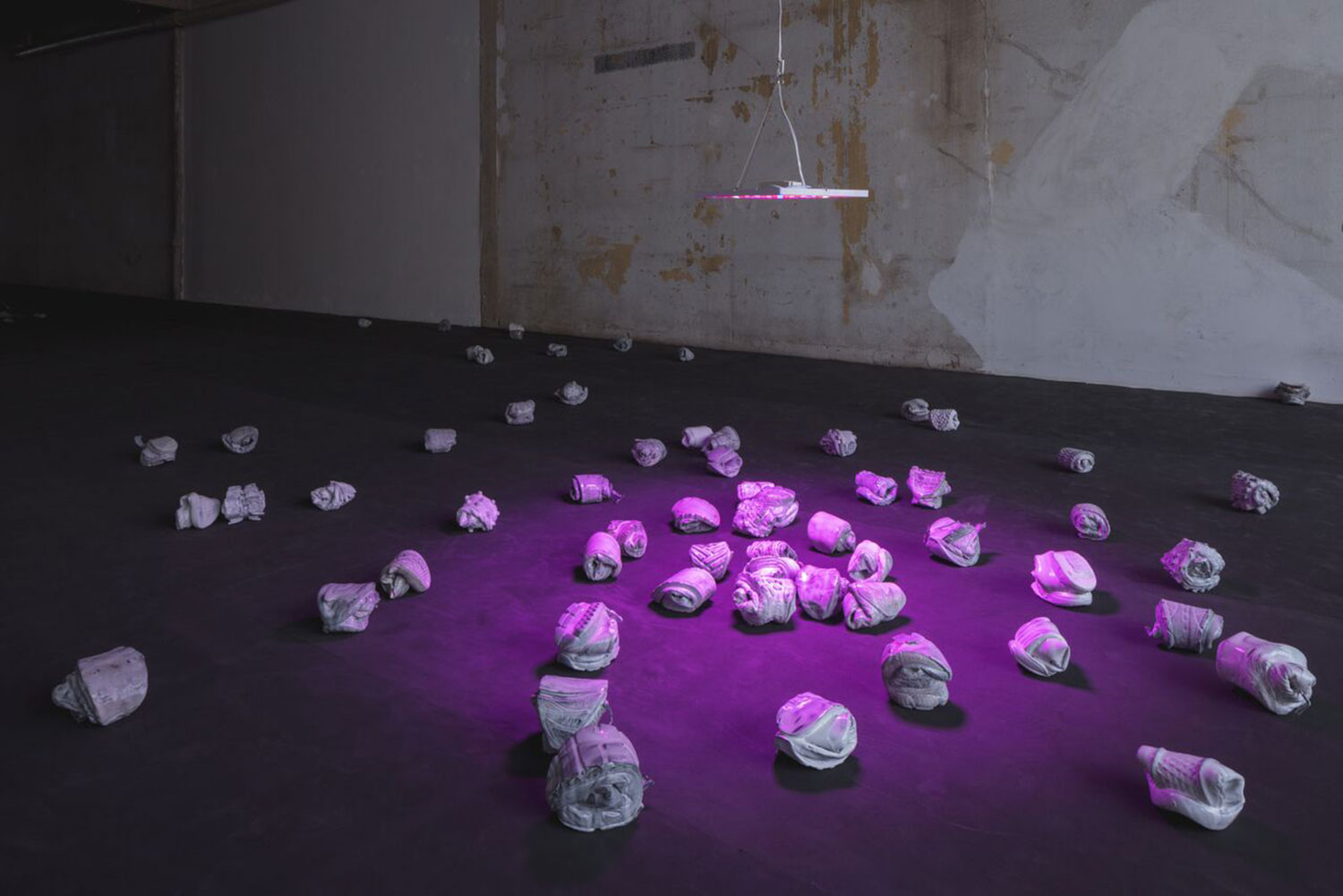An atmosphere of nonspecific impending doom seems to pervade the spaces of Adriano Amaral’s “Alloy Alloy.” Set against sterile white walls and floor, a deep violet-black platform of solar panels covers most of the gallery’s surface.
On it are objects positioned in pairs, abstract at first sight, then revealing recognizable elements when inspected more closely: two horse jawbones encased in prosthetic rubber resting on aluminum rods; a pair of sneakers clad in prosthetic rubber mounted atop ultrasound gel containers; aluminum-powder-coated equine ribs fastened to white oxygen cylinders.
Co-commissioned by and taking place in Vleeshal Zusterstraat and Bielefelder Kunstverein, “Alloy Alloy” is Amaral’s first institutional solo show both in the Netherlands and Germany. Since his 2012 debut at São Paulo’s Galeria Transversal he has pursued a body of work based on an interest in matter, surface, fragility and process that manifests itself in predominantly site-specific installations.
As the title of this exhibition suggests, Amaral’s ongoing fascination with a given component’s fusion and mutability is apparent here, too. Whereas previous exhibitions consisted of more ephemeral gestures within an architectural frame, here the trajectory through the galleries seems to almost offer a narrative. Some works interact with the walls and ceiling of the exhibition space: ultraviolet tubes covered in silicone and attached to stainless-steel wall protrusions correspond with the gallery’s fluorescent lighting. Silicone casts of heavily bolted connections hang limply from vertically mounted stainless-steel brackets, echoing a columnar work that connects the platform to the gallery’s skylight through a prosthetic rubber ribbon, a stainless-steel amnihook, a neon lamp and a suction cup. Iron sulfide spheres lie casually scattered in various corners.
The rib-like shape of the Zusterstraat’s arched ceiling support resonates with the shape of the paired up objects, the doubling emphasizing their anthropomorphic qualities. They stand erect like artificial limbs or indexes of bodily presence; with works and gallery now compounded, the space becomes an object itself — heavy with some untold dystopian storyline.

